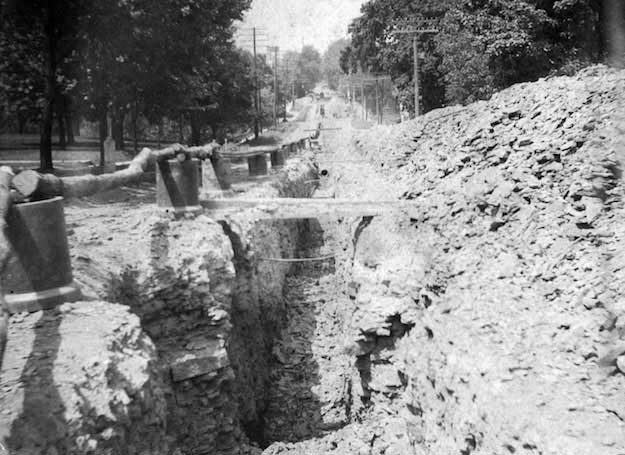Medina expanded sewer system in 1908 in a challenging public works project

“Overlooked Orleans” – Vol. 6, No. 16
MEDINA – In 1907, Gov. Charles Evans Hughes signed a law allowing the Village of Medina to raise approximately $60,000 to expand the sewer system. It was expected that the new pipelines would connect the southern and eastern sections of the village to a preexisting trunk sewer that previously discharged into the Oak Orchard Creek.
Upon the commencement of construction, the State Department of Health expressed concerns about potential issues that might arise from the increased flow of sewage into the main sewer line. Prior to 1903, sewage discharged at a point opposite of the intersection of Glenwood Avenue and Gulf Street.
The construction of A. L. Swett’s sixty-foot high dam created Glenwood Lake and in anticipation of changing sewage disposal needs, Swett constructed a pipe below the lake in order to discharge sewage beyond the dam. Even though this extension was constructed nearly five years earlier, the preexisting trunk sewer was never connected to Swett’s extension and sewage was discharged into Glenwood Lake. The Health Department understood that the increasing flow of sewage would eventually turn the beautiful waterway into a cesspool as solid waste settled on the lakebed.
Following the completion of this project, the Village encountered legal trouble with Dingledyne & Patton, the contractors assigned to complete the eastern section of the sewer line. Medina argued that the contractors failed to complete the necessary sewer work, which required the Village to assume responsibility of finishing the job and thus expending additional funds in the process.
Dingledyne & Patton issued a countersuit, claiming that the Village owed them more than $15,000 for completed work. An appeals court later issued judgement in favor of the contractors, noting that the Village illegally paid for work not completed and issued payment for work which laborers were required to work beyond eight hours per day.
This particular image shows a rather rocky section of East Center Street, looking west towards downtown Medina at the intersection of State Street. In June of 1908, an alteration was made to the proposed sewer line. The original plan involved running this line through a private right-of-way in order to avoid a rock vein. It is clear that the property owner understood the lucrative nature of this predicament and demanded an excessive sum for the right-of-way. Instead, the Village opted to run the line down the center of the street.






































































